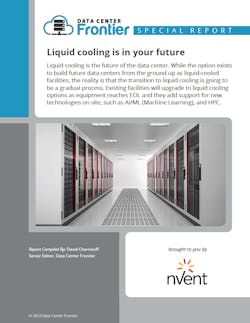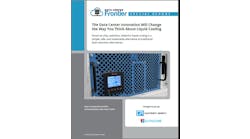How Liquid Cooling Helps You Prepare for the Future
This concludes our article series on liquid cooling in data centers. This week we'll discuss how liquid cooling can help you build for the future.
It is becoming clear that HPC and AI/ML are going to be a big part of the future of business, and being able to support those workloads is going to require that you make liquid cooling available in your data centers. Fortunately, the options for deploying liquid cooling are flexible enough that a business can start by deploying point solutions to solve a particular problem set, such as cooling a single rack or small set of racks where your AI/ML solution lives, without needing to deploy full scale data halls that are liquid cooled and support rack after rack of equipment running HPC/ ML solutions.
This is also where your understanding of future business plans is necessary. While it can be very simple to solve a single problem with a dedicated liquid cooling solution, that same solution may not scale well if it needs to be implemented a dozen or more times. While it may work it is unlikely to be cost effective or energy efficient.
The advantage of these point solutions is that they enable you to dip a toe in the water without committing to deploying full scale solutions. But you need to have a plan in place that will enable you to deploy your solution at scale. This may mean planning your next generation data center to be fully liquid cooled or spending significant time in building your workload placement model for your hybrid cloud.
But the biggest advantage that planning for the future and understanding your workloads will bring is the realization that almost all of these solutions can be done in combinations, allowing you to completely match your power and cooling capabilities with what are everchanging demands from the IT workloads, as the business adapts to the next generation of must- have technologies. The real key to sustainable growth is having different options for supporting the next- generation workloads and liquid cooling gives you the greatest flexibility for that future.
Part of the solution will be finding the right partner to work with when building out your next-generation cooling solutions. This is especially true if you believe that you will need more than a single solution. This is not advocating for vendor lock-in by suggesting you find a single supplier for all of the various solutions but rather that you understand that there are not a lot of standards that apply to this equipment at this point in time. If you select, for example, a vendor for rear door heat exchangers, you are better served by having a single vendor who can provide any RDHx solution you need, rather than trying to mix and match solutions from multiple vendors. This also applies to plans to grow your cooling solutions within your environment. What is your point solution now is not something you want to have to retire if the next step is an incompatible solution that requires replacement of a successfully deployed point solution. Having that path to more capable solutions is a valuable capability.
Download the full report, Liquid Cooling is in Your Future, featuring nVent, for exclusive tips on how to get a head start on liquid cooling in your data center and why now's the time to be getting ready.







